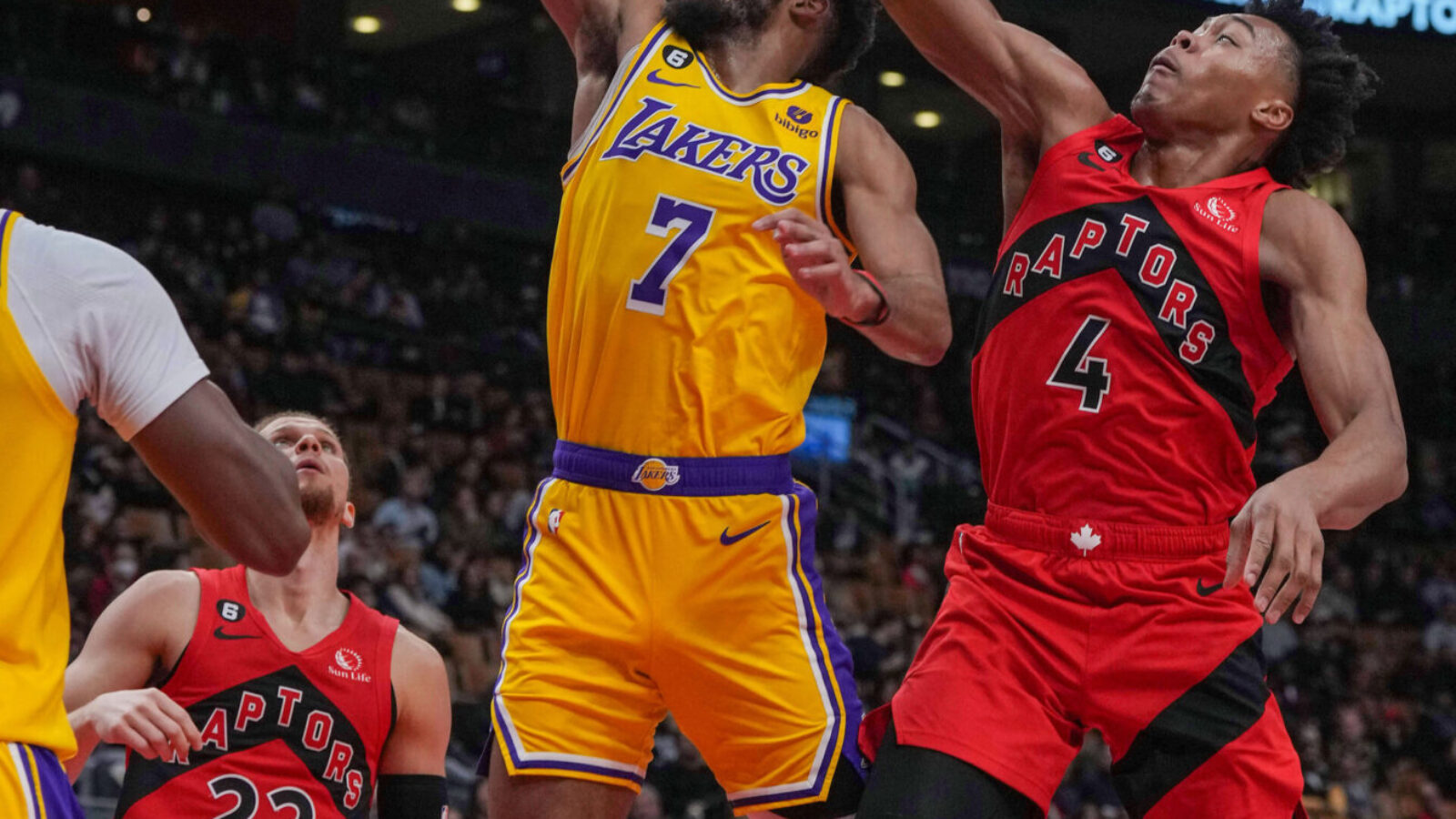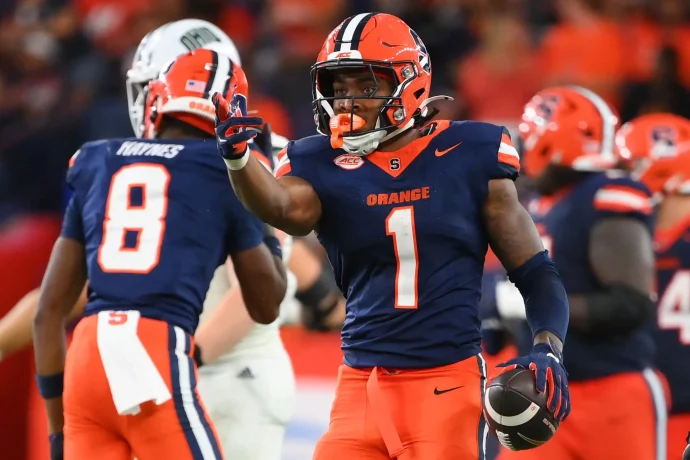Over/under bets (aka totals bets) involve wagering on the total combined score of a sporting event. Instead of betting on which team will win the game, a totals wager tasks the bettor with determining whether the total final score will finish over or under a line determined by the sportsbook.
Totals betting differs from the moneyline and the point spread, as bettors must evaluate a matchup and estimate the combined point total between two team.
Over/Under lines represent a standard bet type offered by sportsbooks around the world. This Props.com Sports Betting 101 guide offers everything you need to know about how over/under wagers work.
How Do Over/Under Bets Work?
All totals odds bets yield three different possibilities. The final score can either end up over, under, or as a push with the line set by the sportsbook.
Average betting totals vary by sport. For example, an average NBA betting totals line hovered around 222 last season, while NFL games averaged 46 total points. MLB totals hover around eight runs per game.
Let’s take a look at some examples of the three ways an over/under wager can finish.
Combined Final Score Goes Over
Sports bettors can find total bets in just about any sports that involves matchups between two teams. The NFL, college football, NBA, college basketball, MLB, and NHL all yield over/under betting markets on just about every game.
For example, here’s a look at BetMGM’s line on the Week 1 NFL game between the Kansas City Chiefs and Arizona Cardinals, from the 2022-23 season:
Kansas City at Arizona
- O 53.5 (-110)
- U 53.5 (-110)
The O 53.5 and U 53.5 notations represent the over and under lines presented at BetMGM for this football game. The 53.5 totals indicates that BetMGM expects a high-scoring game between two of the most potent offenses from the 2021-22 NFL season.
If the total points scored between the Chiefs and Cardinals end up at 54 or more points, the over wins on the totals line. For instance, if Kansas City wins the game 30-27, over bettors cash in on the winning bet for this over/under.
Combined Score Goes Under
If the total number of points between Kansas City and Arizona end up at 53 or fewer points, under bettors win on the totals bet.
For example, if the Chiefs win the game by a score of 30-20, bettors win on the under. The 50 points scored between the two NFL squads comes in at under the 53.5 total in this scenario.
Combined Points Scored Pushes With the Over/Under
Many totals lines are installed with units of half points. Like the 53.5 total in the above example, an over/under line that ends in half points always produces a winning and losing side of the bet.
No game ends with a total that includes half points. Some totals lines are presented as whole numbers, however, and those lines open up the possibility of the game ending on the exact number of points set by the book.
If a game ends on the exact number of an over/under, the bet is a push. In general, any bet that pushes results in the amount of the original wager returned to the bettor.
How Are Over/Under Betting Odds Calculated?
Let’s take another look at our totals bet example from BetMGM:
Kansas City at Arizona
- O 53.5 (-110)
- U 53.5 (-110)
The O 53.5/U 53.5 (the totals line set by the sportsbook) is just one part of the wager. The (-110) under each of those totals displays the payout odds for a winning bet.
Both the over and under pay (-110), close to even money. NFL totals bets generally pay right around even money on both sides, with the book installing a house edge known as vig (or juice) that keeps the wager from paying exactly 1-to-1.
Payout odds with a “+” or “-” in front of the number are notated in American odds format. Virtually all legal U.S. betting sites display payouts in terms of American odds.
To calculate “-” American odds, we can use the following formula:
American Odds Formula For “-” Odds
(100/odds)*(amount of bet)
It’s important to note that even though we’re plugging (-110) odds into this formula for this example, the number is inserted into the equation without the minus sign. The potential payout for a $100 over/under bet at (-110) odds would be solved as:
(100/110)*($100)
Which translates to:
(.909)*$100 = $90.90
Winning a $100 wager on a totals bet with a (-110) potential payout yields a win of $90.90. BetMGM returns $190.90 to the bettor in this scenario ($90.90 profit plus the original $100 bet.)
Another way to look at “-“odds – for a (-110) potential payout you would have to bet $110 to win $100 profit.
Football and basketball totals lines generally offer “-” odds on both sides of the bet. In some other sports, however, you might find a “+” odds payout for either the over or the under.
The calculation for figuring out “+” American odds is as follows:
American Odds Formula For “+” Odds
(odds/100)*(amount of bet)
Inserting (+120) odds in this formula, for example, yields this answer for a $100 wager:
(120/100)*($100)
Like the “-” odds formula, you always insert the line as a positive number in this formula. Putting (120) in this equation gives us:
(1.2)*($100) = $120
A $100 bet at (+120) would pay out $120 in profit. The house would return $220 total to the bettor in the case of a win ($120 profit plus the $100 original bet).
Another way to look at “+” American odds; a (+120) line means you would have to bet $100 to win $120 profit on the bet.
Over/Under vs. Point Spread Betting
Over/under lines represent one of the most basic ways to bet on sports. Virtually all betting sites offer a total, moneyline, and point spread bet on every game.
Moneyline and point spreads task the bettor with predicting which team will win a game. While the spread includes points added to the underdog’s score, both spread and moneyline betting require bettors to pick the game winner.
A totals bet, on the other hand, only involves the combined final score of a game. The winning team doesn’t matter, nor does the amount scored by the individual teams.
While many factors can play into an over/under betting line, totals odds can present an appealing wager in many cases. You can base an over/under bet based on a team’s recent offensive success or defensive efficiency.
Totals bets can take advantage of game factors that could affect the score. For example, a December NFL game between the Green Bay Packers and Chicago Bears could end up as a low-scoring sports contest, due to the weather at an outdoor sports venue like Solider Field or Lambeau Field.
Prop bets function as another form of totals bets. Player props task bettors with determining whether a player will end up over or under a given number in a certain statistical category. You can even place exotic prop bets on things like the length of the national anthem at the Super Bowl.
The over/under isn’t an inherently worse or better bet than a point spread or moneyline bet. If you’re comfortable betting on combined team totals, however, you should consider playing the over/under on a regular basis.
Be sure to check out different sports wagering sites to find the best line on a given totals bet. In-game betting allows you to place totals bets at the quarter or halfway mark of a game.
Be sure to check out the other chapters from the Props.com collection of Betting 101 Guides:
- How to Read Sports Betting Odds
- How to Bet on the NFL
- Guide to Parlay Bets
- How to Win at Live Betting
- Super Bowl Squares Guide
- Best Sportsbook Bonuses
- Daily Fantasy Sports Tips
- How To Bet On College Basketball
- Guide To Filling Out Your March Madness Bracket
- Mobile Sports Betting Apps Vs. Online Sportsbooks
- Sports Betting Tips
- How To Bet On The NBA
- Can I Bet On Sports Legally In My State?
- What Is A Parlay Bet?
- What Is A Prop Bet?
- What Is A Moneyline Bet?
- What Is An Over/Under Bet?
- What Is A Futures Bet?
Best Online Sportsbook Bonuses
Check out the Props.com guides to online sportsbook bonuses in the U.S.
- Top Arizona Online Sportsbook Promos
- Can You Bet On Sports In California?
- Top Colorado Online Sportsbook Promos
- Top Illinois Online Sportsbook Promos
- Top Indiana Online Sportsbook Promos
- Top Maryland Online Sportsbook Promos
- Top Massachusetts Online Sportsbook Promos
- Top Michigan Online Sportsbook Promos
- Top New Jersey Online Sportsbook Promos
- Top New York Online Sportsbook Promos
- Top Ohio Online Sportsbook Promos
- Top Pennsylvania Online Sportsbook Promos
- Top Tennessee Online Sportsbook Promos
- Top Virginia Online Sportsbook Promos
Over/Under Betting FAQ
How do you read an over/under?
When a sportsbook makes over/under odds, the book places a line on a game that represents a total number of points scored between the two squads. To bet the over/under, you must bet on whether the actual number of points scored will fall over or under the betting total presented by the book.
The over side of a totals line is denoted with an “O” or “Over” notation, while the under betting line is designated by a “U” or “Under” notation.
For instance, in the BetMGM over/under example discussed earlier in this article, the betting total is set at 53.5. You would click on the “O 53.5” line if you wanted to bet that the combined total score between the Kansas City Chiefs and Arizona Cardinals will finish above 53.5 points. You would click on the “U 53.5” line to wager that the total will finish under 53.5 points.
What happens if the over/under is exact?
In the case of the final score ending on exactly the number set by the sportsbook, the bet is known as a “push,” and the original amount of the wager is returned to the bettor.
When the book is making odds for totals bets, those lines often end in half points. Totals lines that end in half points can’t end in a push.
Can you put over/under bets in a parlay?
Yes. Over/under wagers can be combined with moneyline, point spread, other total bet lines, and other bet types in a parlay.
Same-game parlays allow bettors to combine over/under, spreads, moneylines, and other wagers from the same game.
What is the difference between over/under and point spread bets?
Over/under wagers task bettors with picking whether two sports teams will produce a final combined score will end up over or under a line set by the book. In a totals bet, it doesn’t matter which team wins the game, or how many points each team scores.
A point spread bet tasks bettors with choosing which team will win the game with the point spread added to the final score. The total combined score doesn’t matter in the case of a spread bet.
In what sports can I make over/under bets?
Over/under bets represent a sports betting staple, available across virtually every sport that involves matchups between two teams. You can find over/under lines on the betting menu for the NFL, NCAA football, NBA, NCAA basketball, MLB, NHL, and many other sports.











